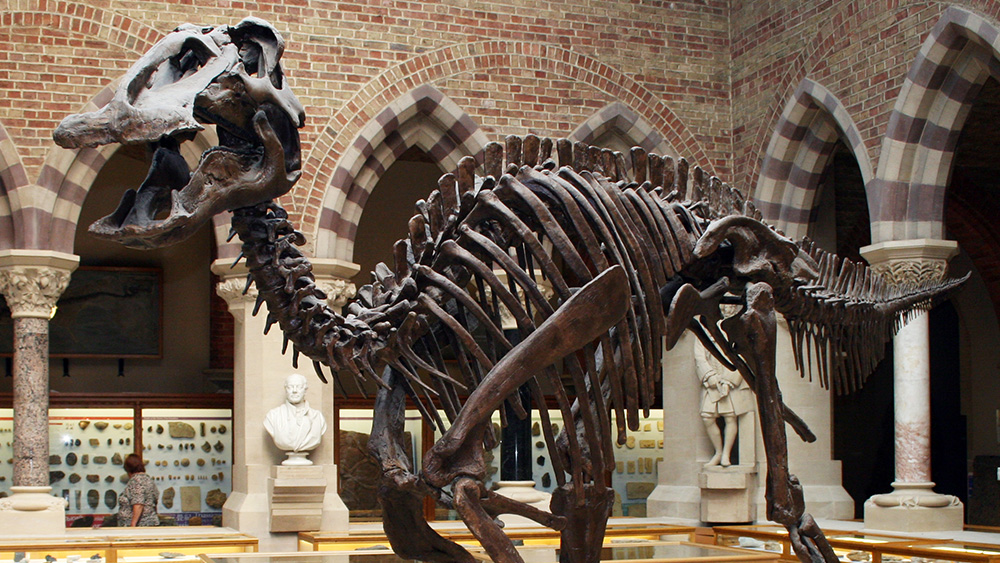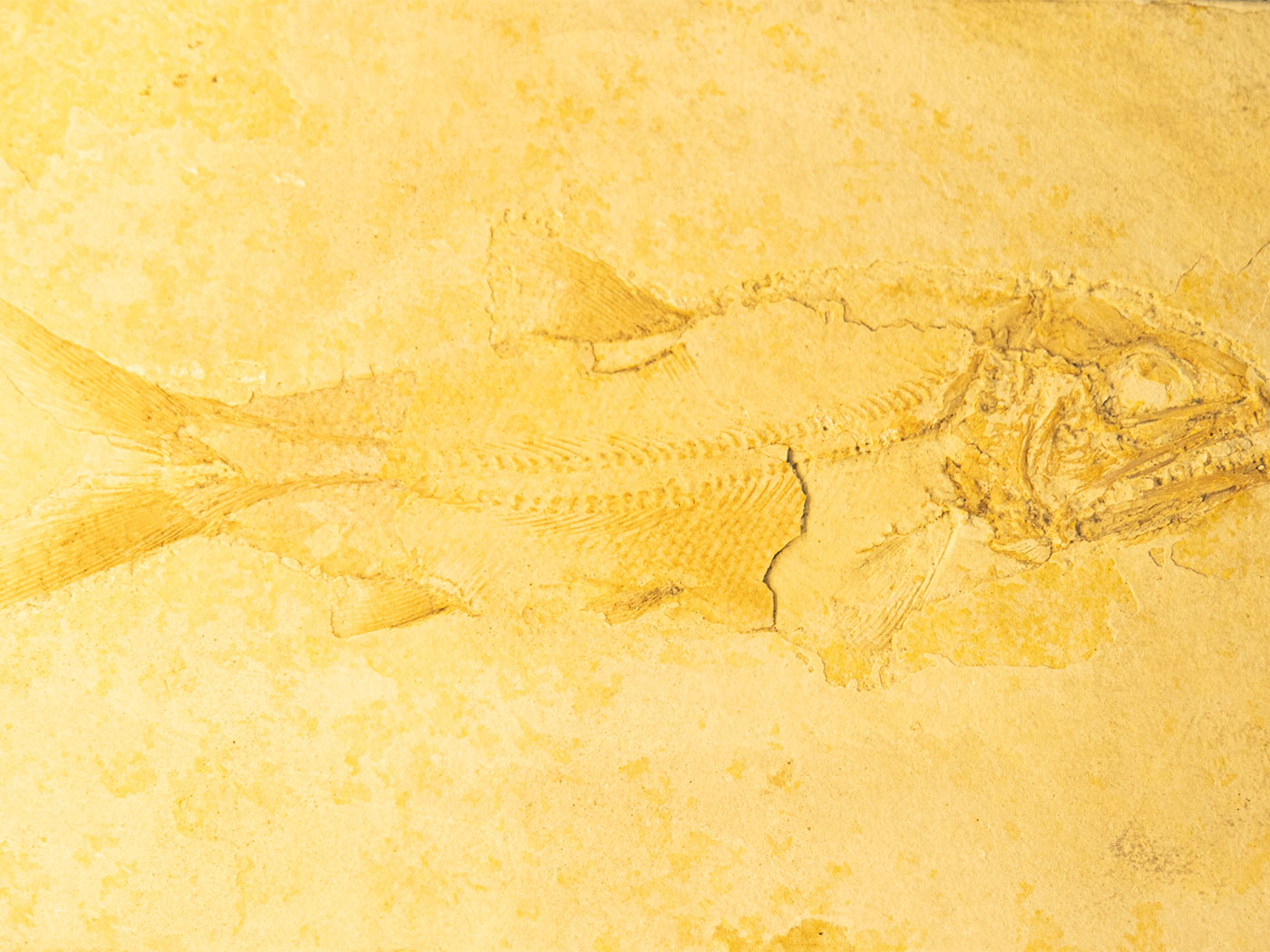The duck-billed dinosaurs (order Ornithischia, family Hadrosauridae) were a diverse group that allegedly lived 90 million years ago, with hundreds of specimens unearthed by paleontologists in China and North America. Hadrosaurs are noted, of course, for their expanded duck-like bills, solid crests, and fleshy combs (a projection of fleshy material above the head).1 Much has been learned about hadrosaurs due to the discovery of several mummified individuals with some of their internal portions and skin surprisingly well preserved. It’s as if they were catastrophically buried in a massive flood just several thousands of years ago. Hmmm…
One of the more popular hadrosaurs is the ornithopod Edmontosaurus, containing two known species. They were found in North America alongside other popular dinosaurs such as Tyrannosaurus and Triceratops. They all show up in the sedimentary rocks complete and fully-formed. They have no evolutionary ancestors.
Recently, secular scientists published research regarding “evolutionary bursts” of the ornate head crest of the hadrosaurs.2 The Paleobiology article speaks of the special adaptations of hadrosaurs’ head crests as well as their teeth and jaws. Creation scientists would instead call the head crests, teeth, and jaws design features of a unique group of the hadrosaur kind. For example, they had complex grinding teeth (common in mammals, but unique among reptiles) to chew their food. The teeth were made up of six separate tissues.3 Benton, in his fourth edition,4 states portions of these teeth (e.g., coronal cementum) are “independently derived” which is an evolutionary way of saying Darwinists have no idea of their origin. In fact, evolutionists don’t even know where teeth came from to begin with.
Interestingly, evolutionist Allaby stated, “The ornithopods are regarded as the most primitive of the ornithischian suborders,”6 while Benton said “hadrosaur [ornithopod] teeth were among the most histologically complex of any animal.”4 How can these dinosaurs be “primitive” if they have the most complex teeth in creation?
We find the sudden appearance of animals, including the various kinds of dinosaurs in the fossil record followed by stasis and minor variation, but no macroevolution. ![]()
The late evolutionary atheist Stephen Gould of Harvard was noted for saying decades ago that fossils suddenly appear complete and fully-formed followed by stasis (i.e., no change). This is exactly what creationists expect. We find the sudden appearance of animals, including the various kinds of dinosaurs in the fossil record followed by stasis and minor variation, but no macroevolution. Evolutionist Tom Stubbs said in regard to hadrosaurs:
What is the difference of traits evolving fast in a single burst and those traits having been instantly created fully-formed on Day 6 of creation? Once the traits show up they show “very little change.” What does this sound like? In addition, a world-leading expert on hadrosaurs said:
How do hadrosaurs know how to “fix on a feeding apparatus”? Did they have a convocation, come to a consensus, and somehow collectively will the fix to happen? It’s more scientific and logical to say hadrosaurs were created with this efficient feeding apparatus in place.
Evolutionary paleontologist Mike Benton stated “Variation in anatomy can arise in many ways.”8 Creationists state this variation of the weird and wonderful head crests didn’t occur by the ethereal production of new genes9 but the segregation of existing variation.
To conclude, their research article could easily be titled, “Duck-billed dinosaur design: the creation of weird and wonderful head crests.”
References
1. Bell, P. et al. 2013. A mummified duck-billed dinosaur with a soft-tissue cock’s comb. Current Biology. 24 (1): 70-75.
2. Stubbs, T. et al. 2019. Morphological innovation and the evolution of hadrosaurid dinosaurs. Paleobiology. 45 (02): 347.
3. Erickson, G. et al. 2012. Complex dental structure and wear biomechanics in hadrosaurid dinosaurs. Science. 338:98-101.
4. Benton, M. 2015. Vertebrate Paleontology. Wiley Blackwell, 228.
5. Ungar, P. 2010. Mammal Teeth: Origin, Evolution, and Diversity. Baltimore, MD: Johns Hopkins University Press, 73. See also Ruecklin et al. Development of teeth and jaws in the earliest jawed vertebrates. Nature. Published online October 17, 2012. or Janvier, P. 2002. Early Vertebrates. UK: Oxford Science Publications, 285.
6. Allaby, M. 2014. Oxford Dictionary of Zoology. UK: Oxford University Press, 438.
7. Stubbs, T. et al. 2019. Morphological innovation and the evolution of hadrosaurid dinosaurs. Paleobiology. 45 (02): 347.
8. Duck-billed dinosaurs: Evolutionary bursts led to weird and wonderful head crests. Science News. Posted on sciencedaily.com May 2, 2019, accessed May 8, 2019.
9. Meyer, S. 2013. Darwin’s Doubt. New York: Harper One. Chapter 11.
Stage image: Edmontosaurus annectens
Stage image credit: Copyright © 2008. Kevin Walsh. Used in accordance with federal copyright (fair use doctrine) law. Usage by ICR does not imply endorsement of copyright holders.
*Mr. Sherwin is Research Associate at ICR. He received a master’s in zoology from the University of Northern Colorado.




















